Manual aquarium cleaning requires extra time and effort, but different types of aquarium catfish do it naturally. Therefore, keeping a catfish is a suitable fish for your aquarium. Before keeping the fish, it’s necessary to learn the basic information about top catfish species, i.e., origin, life stages, etc.
Content Table
While selecting a suitable type of aquarium catfish, remember a few parameters, i.e., size, nature, and many other aspects. This article will also teach you about 9 top catfish species and examples of large and small tank species.
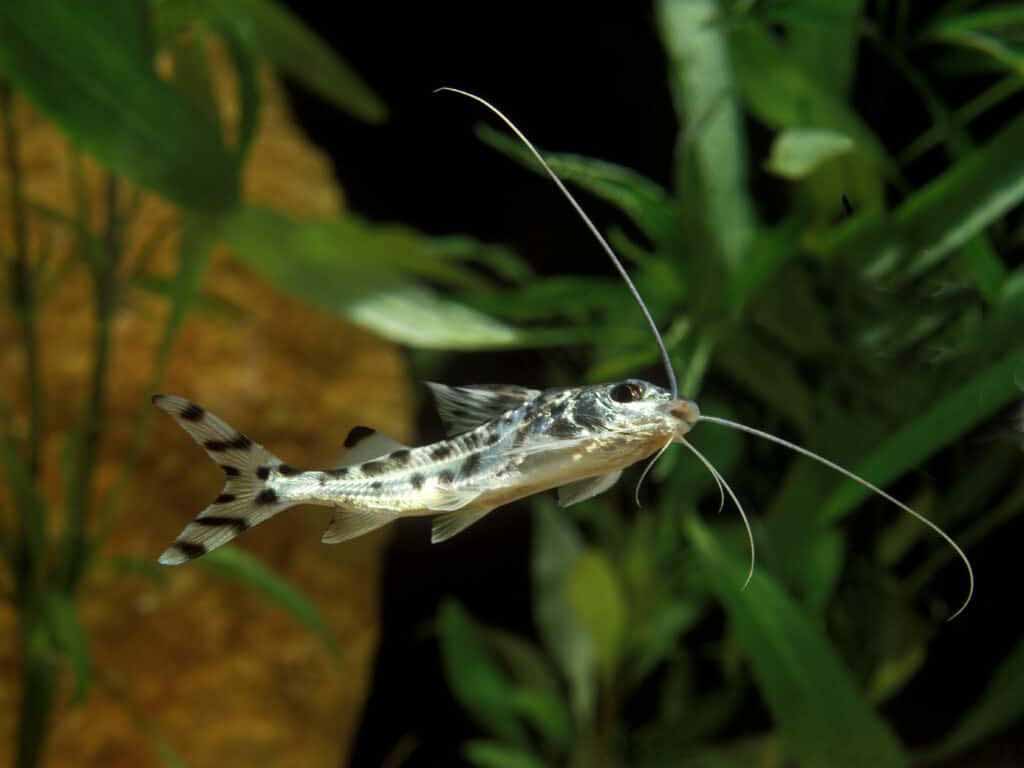
Types of Aquarium Catfish
There are about 2,900 catfish species around the globe from 35 different classes. Most of them are present in freshwater.
Origin of Catfish
They are among the oldest creatures in the world. About 70 million years old fossils of catfish are discovered. They are present throughout the globe, i.e., Africa, Asia, and Tropical South American regions. They usually live in rivers, lakes, creeks, ponds, reservoirs, and freshwater streams. Most of the species are bottom dwellers. They prefer to live in sandy bottom conditions.
Life Cycle
Like many other fish, their life cycle starts from the eggs, not the larval stage.
| Egg | Female catfish lay the eggs. These eggs attach to some surface in the tank, usually driftwood, sand, and gravel. |
| Larval Stage | After the egg hatching, they turn into larvas. At the larval stage, they are small, lack fins, and are transucullent. They are most vulnerable. At this stage, they hide themselves under some tank decorations or leaves. They get their nutrition from the yolk sac attached to their bodies. |
| Juvenile Stage | At this stage, they began to get their features. Fins, scales, pigmentation, and coloration become visible. Moreover, they became a little active and began exploring the tank. |
| Subadult Stage | At this stage, they began to show some adult signs, with more energy and higher activity in the tank. |
| Adulthood Stage | At this stage, they find their mate and reproduce. Moreover, you can observe aggression and territorial behavior in your catfish. |
Role in The Tank
Catfish are scavengers and bottom dwellers. They are also known as “natural tank cleaners.” They eat algae, other foods, and leftover fish food.
Aquarium Catfish Lifespan
The lifespan of any fish depends on their handling. If everything is optimal, they can live longer than many other fish. Like with proper water and other parameters, even Corydoras catfish can live for 10 years. Synodontis catfish can live up to 25 years. Here is the table of the average life span of some catfish in captivity.
| Fish | Average Age |
| Corydoras Catfish | 4-5 years |
| Synodontis Catfish | 8-10 years |
| Pictus Catfish | 8-10 years |
| Otocinclus Catfish | 3-5 years |
| Bumblebee Catfish | 4-5 years |
| Asian Stone Catfish | Up to 5 years |
| Bandit Cory | 5 years |
| Three Stripe Cory | 10 years |
| Skunk Cory | 5 years |
| Bronze Cory | 5-10 years |
| Panda Cory | 10 years |
| Julii Cory | 5 years |
| Dwarf Suckers (Otocinclus) | 3-5 years |
| Tiger Shovelnose Catfish | Up to 20 years |
| Striped Raphael Catfish | 10 years |
Aquarium Catfish Identification
Not all catfish species are suitable for your aquarium. Understand a few parameters before selecting a catfish for your tank.
Size
The size of the fish is among the prime parameters for suitable catfish selection. Some catfish can grow very large, i.e., Blue Catfish, which isn’t suitable for keeping in an aquarium. There is a simple rule regarding the size, select a species that can grow up to half of the length of your aquarium.
Predatory Behavior
Some catfish have predatory behavior. They love to feast on the small fish. Therefore, check the fish species’ behavior and best possible companions for selected species. If you are keeping a predator or bully fish, introduce the same size and same-nature companion fish. Another option is Fast-moving fish, i.e., zebrafish, tetra, etc.
Water Parameters
Water parameters also affect the selection of fish for your tank. Each species has its optimal water parameter, i.e., some prefer soft, others love acidic, and some go well with hard or alkaline water. Therefore, the suitable catfish species for your tank require the same water parameters.

How to Identify the Gender of a Catfish?
You can identify the difference between males and females with the urogenital opening of catfish.
| Male | Female |
| One urogenital opening | Two urogenital openings, i.e., genital pore and urinary pore |
Top 9 Catfish Species for Fish Tanks
There are specific aquarium catfish species that you can keep in the aquarium. The 9 best catfish species for aquariums are in the following.
Bristlenose Catfish
| Bristlenose catfish are also known as Bristlenose pelcos. They are native to the Amazon River basin. They are present in fast-flowing rivers and flood plains. As compared to other freshwater fish, they show rapid growth. They reach their full size, i.e., average 5 to 6 inches, in 2 years.
They become adult sooner than any other catfish, i.e., 2 years. They achieve up to 8 inches in size in adulthood. They live for 12 years with proper care in the tank. They are natural cleaners for the tanks. They love to feast on algae and moss. |
 |
Twig Catfish
| Twig catfish are South American natives. They are present in Panara, Orinoco, Amazon, and the coastal rivers of Guyana Shield. They live in slow-moving streams and rivers. They prefer to camouflage them with dead leaves. Moreover, they love a messy environment, i.e., full of twigs, leaves, branches, plant roots, etc.
At adulthood, they achieve a maximum of 7 inches in length. They usually live up to 15 years. They are peaceful creatures and live in small groups. Like Bristlenose, they are also natural substrate cleaners. They love to eat algae and detritus. Moreover, they also eat leftover food and decaying plant material. |
 |
Glass Catfish
| They have a unique translucent body, which entitles them to a glass catfish name. They are native to Thailand and Indonesia and river basins in the Cardamom Mountains. They live in slow-moving water habitats. They live in dark environments because they are sensitive to light. They love to explore the tank, but when they feel bored, they hide under some decoration.
The size of this ghost fish varies among different species. Kryptopterus vitreolus can grow to 8 cm. Kryptopterus minor can achieve 6.8 cm. On average, they can live 6 to 8 years. Kryptopterus bicirrhis achieve a maximum of 15 cm in size. These bottom dwellers are scavengers, and they prey on small fish. |
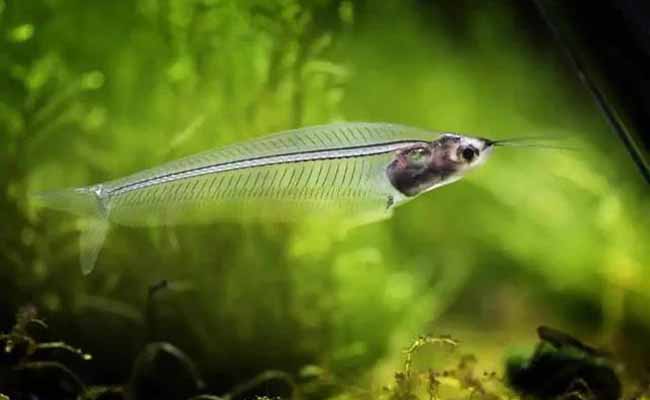 |
Pictus Catfish
| Pictus Catfish is a nocturnal fish native to the Amazon and Orinoco river basins. They are present in Peru, Colombia, Venezuela, and Brazil. They live in shallow waters at the bottom of the river system. These small fish can achieve 3 – 5 inch size.
However, in large aquariums, they can grow up to 6 inches. Typically, they can live up to 4 – 8 years in tanks. They clean the tank’s bottom by eating algae and leftover fish food. |
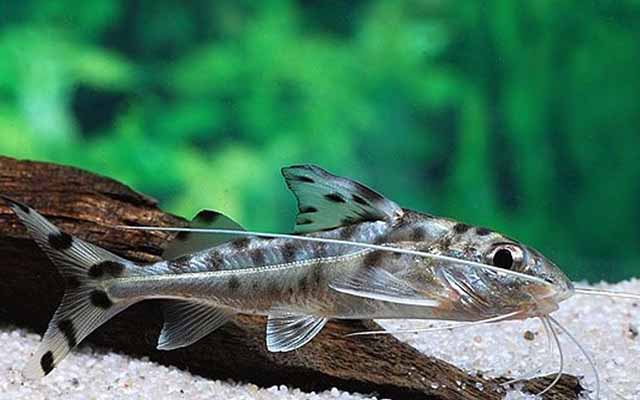 |
Plecostomus (Suckermouth)
| Plecostomus has another name, i.e., armored catfish. They are present in the South American fresh waters, i.e., Trinidad, Costarica, Panama, and Tobago. They are also present in the brackish environment of the United States, i.e., Novida, Florida, and Texas. Fast-moving rivers are their usual habitat with pebbly substrate.
On average, they achieve 15 inches in size. However, they can grow up to 24 inches. They can live up to 10 to 15 years in captivity and 7-8 years in the wild. They are nocturnal and bottom dwellers. Sometimes, they are referred to as janitor fish as they eat the algae and fish leftover food. Get the care guide for Pleco fish. |
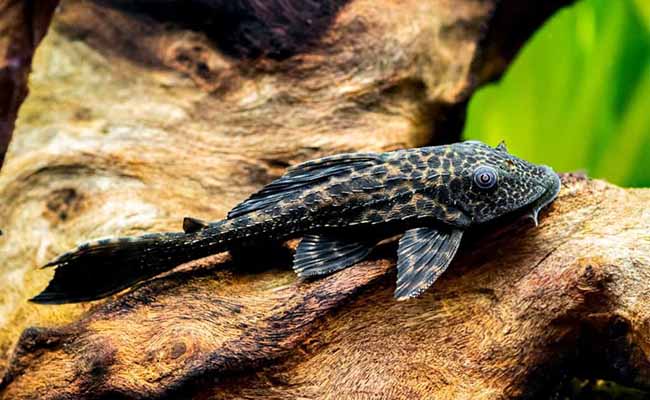 |
Striped Raphael Catfish
| Striped Raphael Catfish is native to Latin American regions, i.e., Amazon, Orinoco, Paraguay, and Paraná. They present in slow-moving water with a sandy substrate. They also live in still water. They are 6 inches in average size. However, they can achieve 10 inches in size in the wild and 9.6 inches in aquarium.
Typically, they live for 10 years. However, 15 years and 20 years of age are also reported. This active and nocturnal fish loves to feast on crustaceans, mollusks, and organic debris. In tanks, they have the role of scavengers. |
 |
Upside-Down Catfish
| This hardy fish can swim upside-down while searching for food. They are the habitat of the African region, mainly the Cango River Basin. They are present in Cameroon, Cango, and Zaire. They live in densely vegetated areas around the rivers, streams, and marshy sites. They can maximally achieve up to 4 inches. However, their average size is between 3 – 5 inches. They live up to 15 years. They are also known as “tank clean-up crew,” as they clean the tank at the bottom. They eat meat, pellets, vegetables, crumble, and flakes. |
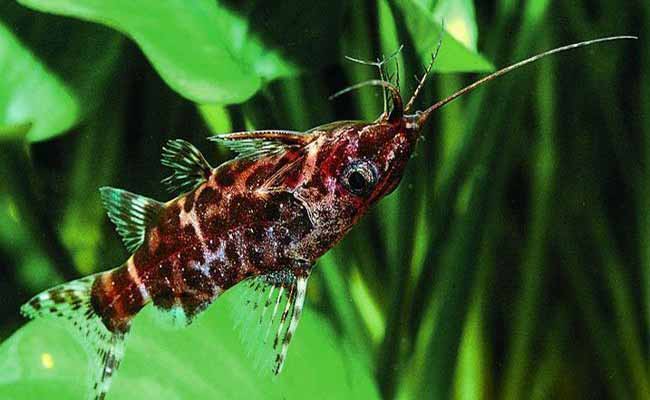 |
Cory Catfish
| Cory catfish is among the most common catfish for aquariums. They are native to South America. They live in slow-moving freshwater rivers, streams, and tributaries. They can even be present in still-water environments.
Cory catfish are peaceful, bottom dwellers, and highly energetic. They act as tank cleaners. They need a smooth transition from pet store to tank because many die short after adding to the tank due to stress. Most species achieve a size of less than 2.5 inches. |
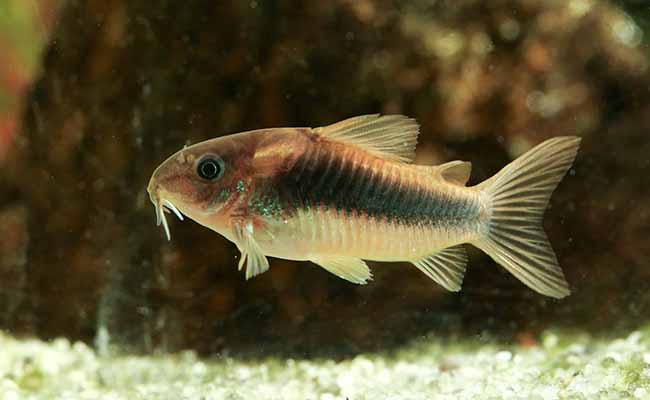 |
Synodontis Catfish
| Synodontis Catfish are native to tropical African regions. They are usually present in freshwater streams, rivers, crevices, creeks, ponds, etc. They have about 31 different species. They vary in size among species. Some species can achieve 12 inches. | 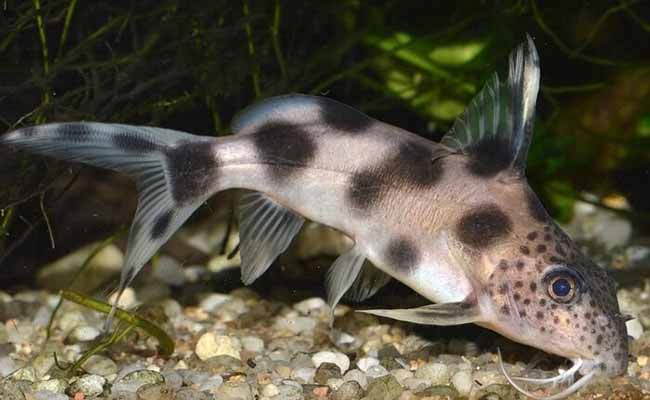 |
Large Aquarium Catfish vs Small Catfish for Aquarium
Here is a list of catfish species suitable for beginners for small and large aquariums.
Small Tank
| Bristlenose Pleco | Dwarf Chain Loach | Panda Corydoras |
| Albino Corydoras | Dwarf Anchor Catfish | Otocinclus catfish |
Large Tank
| Pictus Catfish | Striped Raphael Catfish |
| Synodontis Catfish | Raphael Catfish |
So, What Now?
Decide about the tank size and companions. Set the tank parameters and cycle it. After that, the selected catfish species and companions are in the tank. Set a maintenance routine. In case of any unusual aspect, address it early on.
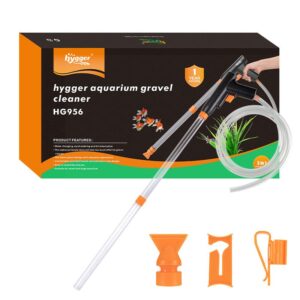
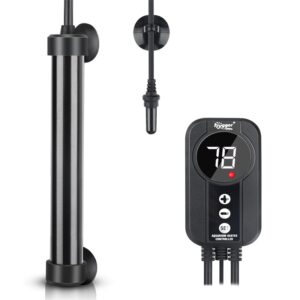
Leave a comment